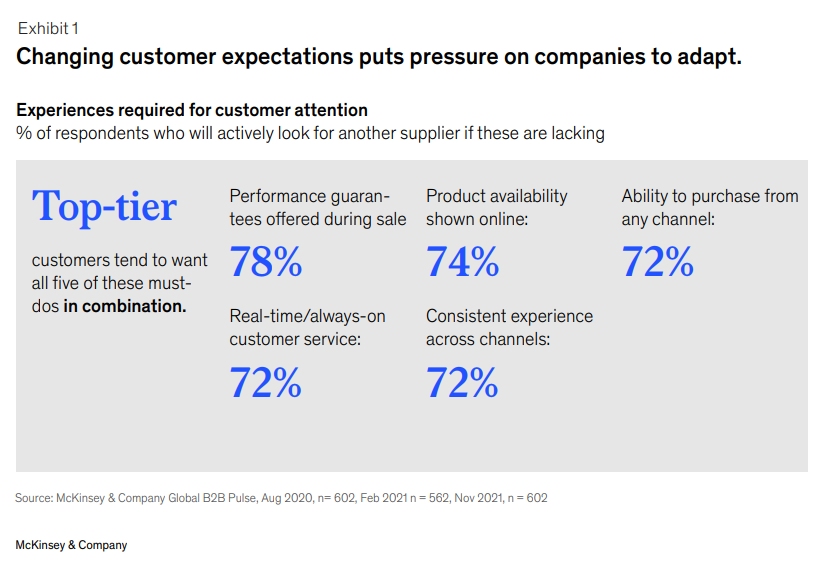Modern customers demand more, and B2B salespeople who understand this reframe set themselves up for success.
COVID-19 compelled businesses to move online; everything we associated with the word ‘in-person’ moved into virtual spaces. But even though a digital sales environment came with unique challenges, it also showed an unexpected level of success.
Turning the page on the pandemic, businesses are now shifting to a hybrid sales model. Even during the economic turmoil, some savvy sales leaders are learning to leverage the new situation and leapfrogging competitors. This article will show you how.

1. Customer-centric sales
Customer needs have shifted enormously in the last couple of years. With all the knowledge at their disposal, they need more from brands and their customer-facing teams. They want salespeople to come prepared to demonstrate how their solutions address customer pain points and prove expertise with personalized omnichannel experiences.
Supporting customer buying journeys and making the interactions easier for them would drive revenue growth. Businesses must shift the focus from the traditional sales funnel to journey orchestration.
2. Sales Analytics
Salespeople must take an evolved approach to prospecting. Harness the power of data and customer intent to gauge buyer readiness. Analytics will convert the comprehensive customer data into insights and eventually into results.
One thing B2B sales teams need to learn from their B2C counterparts is tailored communications. Sales analytics will allow you to keep a pulse on customer intent and craft data-backed value propositions, delivering consistent experiences precisely when your prospects expect them.
3. Setting the content bar high
Outperforming brands zero in on communicating complex ideas in a simple way. B2B products require a substantial investment, and your content has to be convincing enough for buyers. That’s where trust comes into the picture.
Great B2B content shows experience and thought leadership. It supports the buyer’s decision-making, validating that the seller isn’t just another vendor but a partner. Create content that is result-oriented and focused on outcomes.

4. Channel Mix
Most B2B buyers prefer digital interactions. A mix of online and offline channels can help sellers support different stages of the customer journey.
Salespeople need to read different situations and comprehend what makes the buyers tick in both digital and in-person settings. Our analysts suggest a hybrid approach here- digital channels allow for more informed and frequent communications, and physical meetings give the much-needed human touch to a B2B sales environment.
5. Events
In today’s age, events are a great way to foster robust relationships and build credibility. Modern brands now organize webinars, hackathons, and conferences to draw customers’ attention and build trust.
Sales and marketing departments have to be in sync for events to work well. Silos can lead to overlapping touchpoints; sales and marketing teams collaborating can help close deals faster and coordinate a smooth handoff.
The Editor’s Note
Brands must assess how customers are using their products and services. Customer-led growth is the future of sales and marketing. Comprehending product usage data will pave the way for meaningful customer interactions, boosting conversion rates and solidifying retention.





